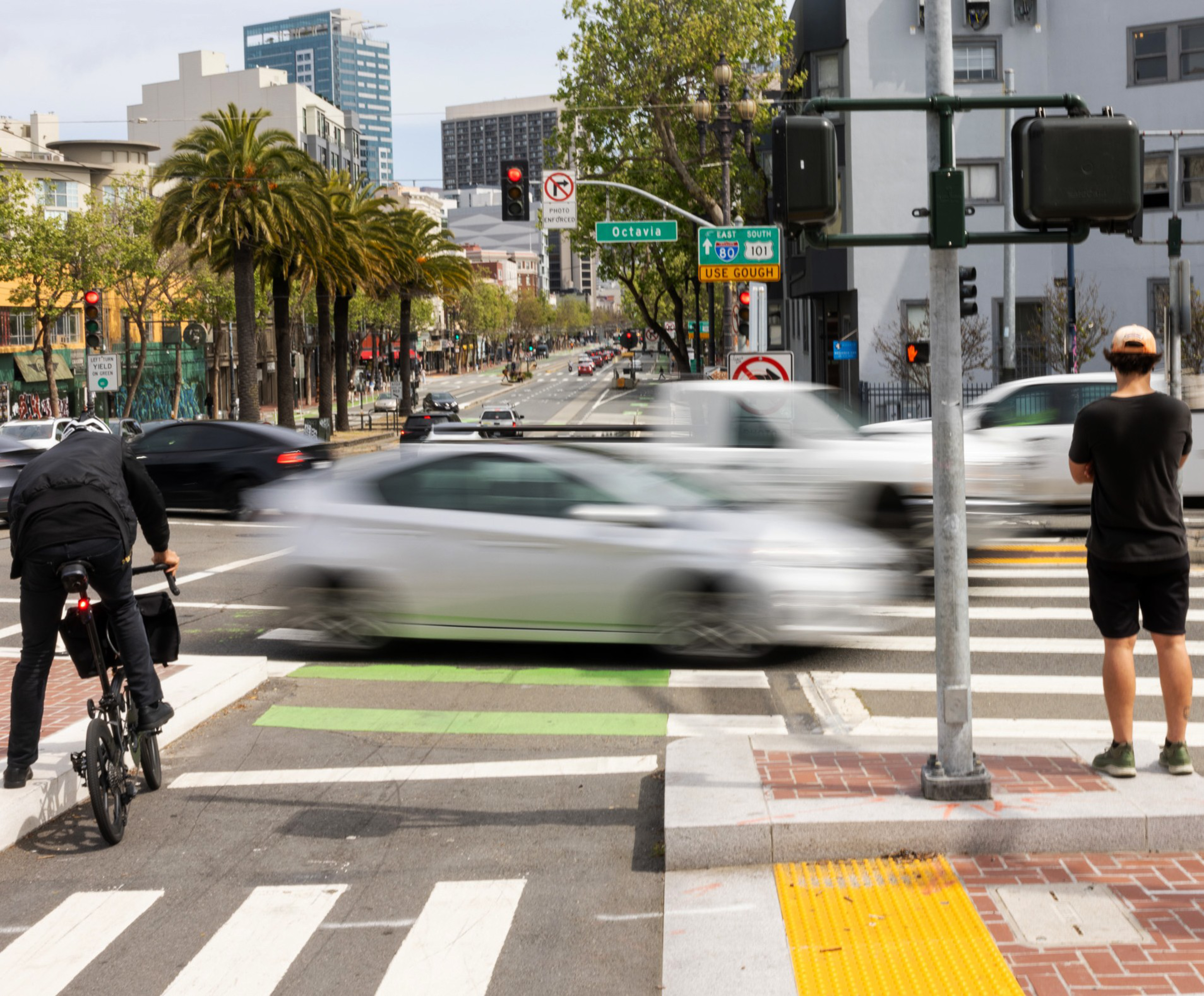The San Francisco Police Department announced Thursday that it is cracking down on speeding and plans to deploy waves of officers to monitor the 10 intersections that have become the largest hot spots for crashes in the city.
“Speed is most often the factor that makes a crash a fatality,” SFPD Traffic Company Cmdr. Nicole Jones said at a Board of Supervisors hearing outlining the department’s new traffic enforcement plan. “We are making a concerted effort to slow the streets down.”
SFPD’s focus on the most dangerous intersections in the city is driven by persistent short staffing that has plagued both the Traffic Company and the department as a whole.
“We no longer have the luxury of just conducting traffic enforcement as we come upon it,” Jones said. “We need to be conducting strategic enforcement in the areas where we can save the most lives, and where we can keep the most people free from injury.”
The new traffic enforcement plan comes as pressure has been mounting citywide to shore up street safety. In March, a driver hit a family of four at a West Portal bus stop, killing a couple and their two young children. That prompted Mayor London Breed to call for a complete overhaul of city streets and a recommitment to San Francisco’s Vision Zero initiative, which has aimed for a decade to end traffic deaths, though it has failed to do so thus far. Enforcement of both moving violations and unsafe parking is central to Breed’s street safety plans.
But high-profile collisions have continued even as the city rolls out its new initiatives. A scooter-riding Bob’s Donuts baker was hospitalized with life-threatening injuries after a car struck him on Sunday. Twelve people have died in traffic incidents in San Francisco in 2024 so far, according to preliminary SFMTA data (opens in new tab). (SFPD, which compiles statistics using a different methodology, says the number of traffic deaths is 13.)
The number of traffic citations San Francisco police issued fell off a cliff in the past decade, dropping from nearly 130,000 citations in 2014 to about 5,100 in 2023.

Why exactly that 96% decline happened is less clear. SFPD leadership has pointed to short staffing and increased paperwork required by new state laws. But outside observers, including Supervisor Raphael Mandelman, who called Thursday’s hearing, have said that choices by city leaders to prioritize other types of crime have driven the citation totals as low as they have gone. Mandelman pointed out that the department spent just $200,000 of its nearly $50 million overtime outlay on traffic enforcement last year.
“The City of San Francisco has not made traffic enforcement one of our highest public safety priorities,” Mandelman said, adding that overtime could easily increase traffic enforcement until the Traffic Company staffs up more.
Meanwhile, some locals have criticized the officers for failing to enforce traffic laws, even when they are broken right in front of them.
San Francisco resident Freddy Cardigan said during public comment that a driver nearly struck him and his husband as they walked through a North Beach crosswalk. Even though a police cruiser was parked right there, the officer didn’t take action.
“There were absolutely no consequences for the reckless driver,” Cardigan said.

But Jones is determined to increase traffic enforcement and improve road safety using a multipronged approach. The department’s “direct enforcement” operations will focus on pedestrian danger zones that are flagged by crash data and other city agencies. Meanwhile, the Traffic Company will conduct “wave operations” at the most dangerous intersections, rotating through twice a week for two hours per day once every three weeks.
SFPD issued nearly 2,900 citations in the first three months of 2024, setting it on pace to easily outstrip the 2023 total of about 5,100.
Mandelman celebrated the increased citation rate but noted it still pales in comparison to the totals a decade ago.
Jones agreed, and said her team is committed to continuing to boost traffic citations.
“We need to go way up,” Jones said.
